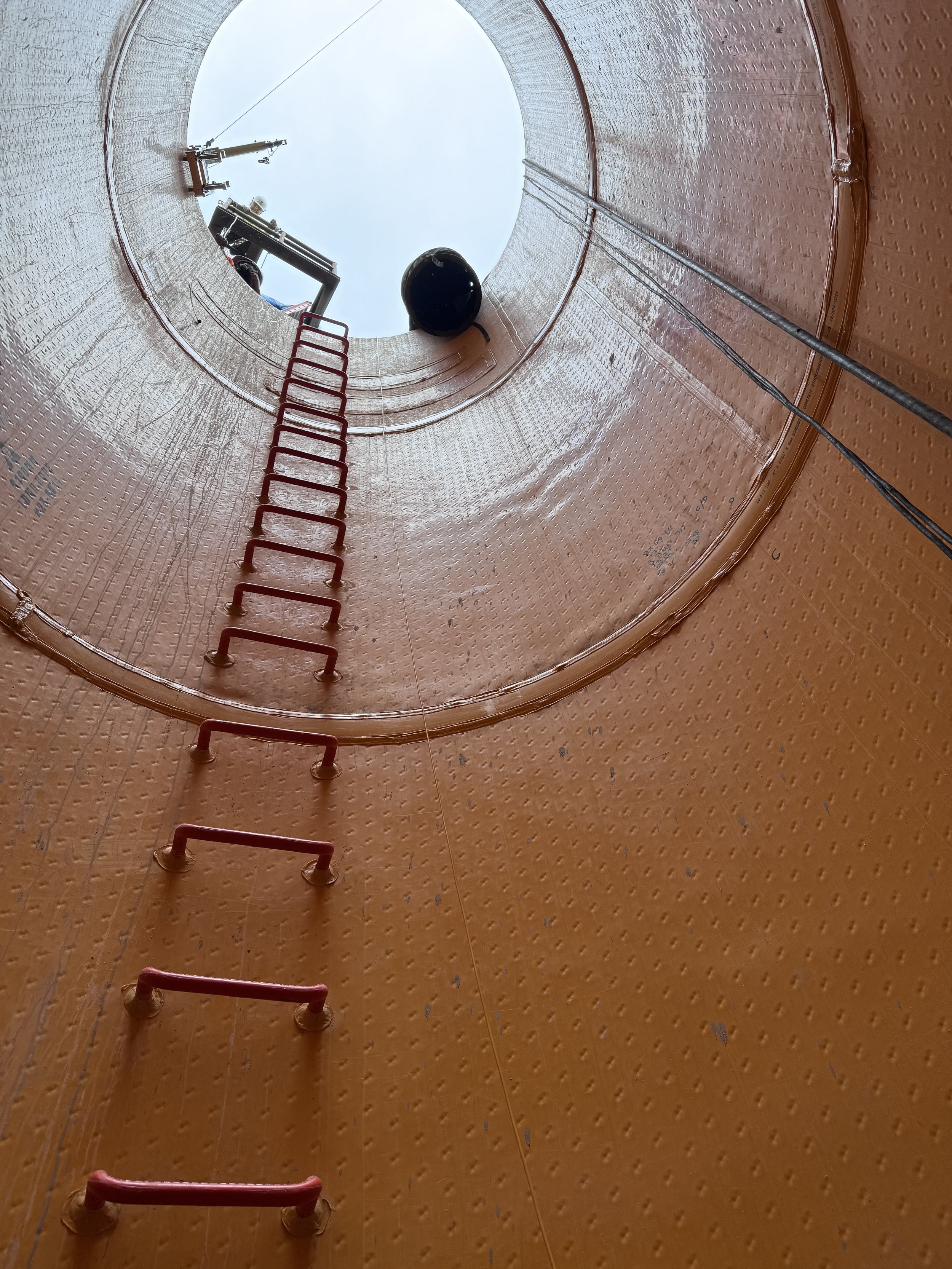HDPE vs Epoxy: Best Concrete Protection in SoCal
Concrete in Southern California faces some serious tests. From intense heat to salty sea air, each factor can cause wear and tear. Earthquakes add another layer of risk, putting pressure on concrete to stand strong against seismic shifts. With so much at stake, it's essential to protect concrete structures effectively.
Challenges of Concrete Protection in Southern California
Concrete structures in Southern California face several specific challenges due to the region's climate and geographical conditions. The area's hot and dry summers lead to significant thermal expansion, while cooler nights cause contraction. This constant movement creates stress on the concrete, making it prone to cracking or breaking down.
Another major challenge comes from earthquakes. Southern California is part of an active seismic zone, and these natural events can shake structures violently. The pressure from these movements stresses the concrete, potentially causing severe damage if the material isn't properly protected.
The salty coastal air adds another layer of difficulty. Salt from the ocean can penetrate concrete, leading to corrosive damage that weakens the structure over time. In addition, air pollution contributes to deterioration, as chemicals in the air can interact with the concrete, accelerating its breakdown.
To effectively protect concrete, it's essential to address these challenges comprehensively. This requires selecting materials that can handle temperature changes, seismic activity, and environmental corrosion, ensuring that the concrete remains durable and safe over its lifecycle.
Why HDPE Liners Excel in Concrete Protection
HDPE liners are an excellent choice for concrete protection in Southern California, providing several important benefits tailored to the region's needs. Their flexibility is a standout feature, allowing these liners to expand and contract along with the concrete. This prevents cracks and extends the life of the concrete by adapting to temperature shifts.
In terms of durability, HDPE liners offer strong resistance against chemical exposure, UV rays, and corrosive elements. This quality is crucial in coastal areas where salt and pollution are constant threats. By forming a tough barrier, HDPE liners shield the concrete from harmful environmental effects.
Installing HDPE liners is both efficient and cost-effective. The process is straightforward, allowing for quick coverage without extensive labour. This means less time spent on installation and fewer costs compared to more complex systems.
Here's why HDPE Concrete liners excel:
Flexibility for temperature adaptation
Strong resistance to chemicals and UV rays
Quick and cost-effective installation
By choosing HDPE liners, structures gain an optimal protective layer that not only meets Southern California's specific environmental demands but also ensures long-term structural integrity.
Epoxy Coatings: Limitations in SoCal's Environment
Epoxy coatings have been widely used for concrete protection but face significant limitations in Southern California's environment. A major drawback is their lack of flexibility. Epoxy is rigid and cannot expand or contract with temperature changes. This inflexibility can lead to cracking or peeling when the concrete moves due to heat.
Seismic activity poses another challenge. Epoxy coatings may not withstand the stresses caused by earthquakes. When the ground shifts, and the concrete surface moves, the epoxy can crack, leaving the concrete exposed to the environment.
Furthermore, installation of epoxy coatings requires precise conditions to ensure proper adhesion. High humidity and temperature changes during application can affect their effectiveness, often leading to bubbles or poor adhesion. This complicates the process, making it less reliable in varying weather conditions.
Lastly, while epoxy provides some level of chemical resistance, it may not withstand prolonged exposure to harsh coastal environments. The salty air and pollutants of Southern California can degrade the coating over time, compromising its protective capabilities.
Choosing HDPE Liners for Optimal Concrete Safety
Selecting HDPE liners ensures optimal safety for concrete structures in Southern California. These liners address many environmental challenges that concrete faces in this region. Their flexibility and durability make them the preferred choice for long-lasting protection.
HDPE liners adapt well to temperature changes, expanding and contracting along with the concrete. This significantly reduces the risk of cracks and maintains the structural integrity of the concrete. Their strong resistance to chemicals and UV rays provides a robust shield against environmental damage, particularly in coastal areas where exposure to salt and pollutants is common.
Moreover, the installation process for HDPE liners is both efficient and reliable, providing seamless coverage that is less prone to installation errors. This makes HDPE liners a cost-effective solution for long-term maintenance and protection.
In weighing the pros and cons of available options, HDPE liners clearly stand out as the most effective choice for safeguarding concrete in Southern California. Their ability to handle the region's unique challenges ensures that concrete structures remain protected and durable for years to come.
Securing the future of concrete structures in Southern California requires choosing materials that address the region's unique environmental challenges. With the risks posed by temperature fluctuations, seismic activity, and environmental pollutants, HDPE liners emerge as the best choice for long-term protection. Their flexibility, durability, and ease of installation make them an optimal solution for keeping concrete safe and sound.
Engineered Containment can help you protect your concrete structures effectively with HDPE liners. Our expertise in environmental and infrastructure protection ensures your projects meet the highest standards of safety and durability. Contact us today to learn how concrete protective liners can safeguard your concrete and extend its lifespan in Southern California's demanding environment.


